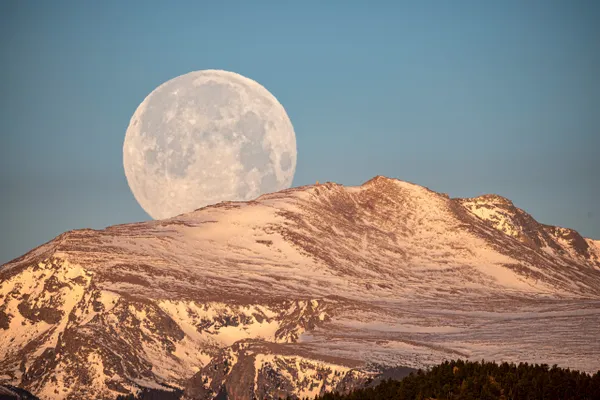Indian scientists have analyzed data on the composition of the regolith obtained during the Chandrayaan-3 mission. It turned out that they were similar to the samples studied in previous missions, but worked at different latitudes. According to the researchers, this confirmed one of the hypotheses regarding the formation of the Moon.
At the end of August 2023, the Indian Chandrayaan-3 mission made the first soft landing on the Moon. The descending “Vikram” device with the “Pragyan” lunar rover on board landed between the Mantsini and Bohuslavsky craters, 350 kilometers from the edge of the South Pole’s largest shock basin Aitken.
The lunar rover “Pragyan” began its journey on the surface. Its arsenal includes an alpha particle X-ray spectrometer (APXS), designed for elemental soil analysis. From August 23 to September 2, it made 30 measurements of the lunar eclipse at 23 points, covering a distance of 103 meters.
APXS fired a beam of alpha particles and X-rays into the ground and picked up a spectrum of the radiation they produced. The instrument compared this with previously known data and recorded the soil’s composition.
The analysis showed a uniform composition of the regolith in all but one of the 23 points. The device recorded the main (SI, Ti, Al, Fe and others) and secondary chemical elements (Na, S, K, Ti, Cr, Mn, Ni). APXS penetrated to a depth of no more than a millimeter, but the soil thrown up by the wheels of the machine from a depth of several centimeters inevitably got into the samples.
Only three previous missions can be compared in terms of analysis accuracy: the American Apollo 16, the Soviet Luna 20 and the Chinese Chanye 4. These are a few rare spots on the continents. The authors of the article published in the journal emphasize that the Chandrayan-3 mission for the first time obtained dense measurements in an area of tens of meters Nature.
The regolith at the landing site is rich in calcium and aluminium, with small amounts of iron and titanium. This indicates soils typical of continental anorthosite. Data from X-ray spectrometers on the Chandrayaan-2 and Chandrayaan-1 orbiters confirmed what Pragyan saw. Moreover, near-infrared imaging of the terrain with a spectrometer placed onboard Chandrayaan-1 by NASA showed a roughly uniform composition of the regolith with a spatial resolution of a few kilometres.
Samples obtained with APXS occupy an intermediate position between the Apollo 16 and Moon 20 samples.
“The landing sites are far apart: equatorial, mid-latitudes and mountainous regions of high southern latitudes. The similar composition of the regolith in them confirms the basic prediction of the lunar magmatic ocean hypothesis, which proposes that the chemical evolution of the Moon began with differentiation during the solidification of the ocean,” the authors of the scientific paper explained.
According to the most popular hypothesis, the Moon is a piece of Earth that collapsed as a result of a collision with a space object the size of Mars. After the impact, the upper few kilometers of the future moon melted, and its surface turned into a liquid magmatic ocean. This is confirmed by the anorthosite rocks common on the lunar continents. Anorthosite consists mainly of plagioclase enriched with calcium oxide. It is less dense, so it rose from the magma, melting and forming the primary crust, while the heavier olivine and pyroxene sank, forming the mantle.
Some models suggest that the primary crust (and continental highlands) consists of pure anorthosite. However, according to APXS, these are ferroanorthosites (FAN, ferroan anorthosites). The magnesium oxide concentration in the samples also increased, while the silicon oxide concentration decreased slightly. The olivine fraction is more dominant than the pyroxene fraction, which is unusual for continental samples.
The researchers hypothesized that some features of the composition of the regolith at Pragyan’s study site were due to the addition of minerals from the lower crust and upper mantle that arrived there from emissions of material from around the astroblem.
Thus, the new data support the hypothesis of a lunar magmatic ocean, according to which the continents arose as a result of the flotation of light anorthosite rocks. The most suitable model is a two-layered crust: the upper one rich in plagioclase, the lower one rich in olivine and pyroxene.
To be fair, the study authors mentioned alternative scenarios, but more importantly, they say, the uniformity of the regolith composition will allow the site to be used as a model for creating remote observations and planning future missions.













